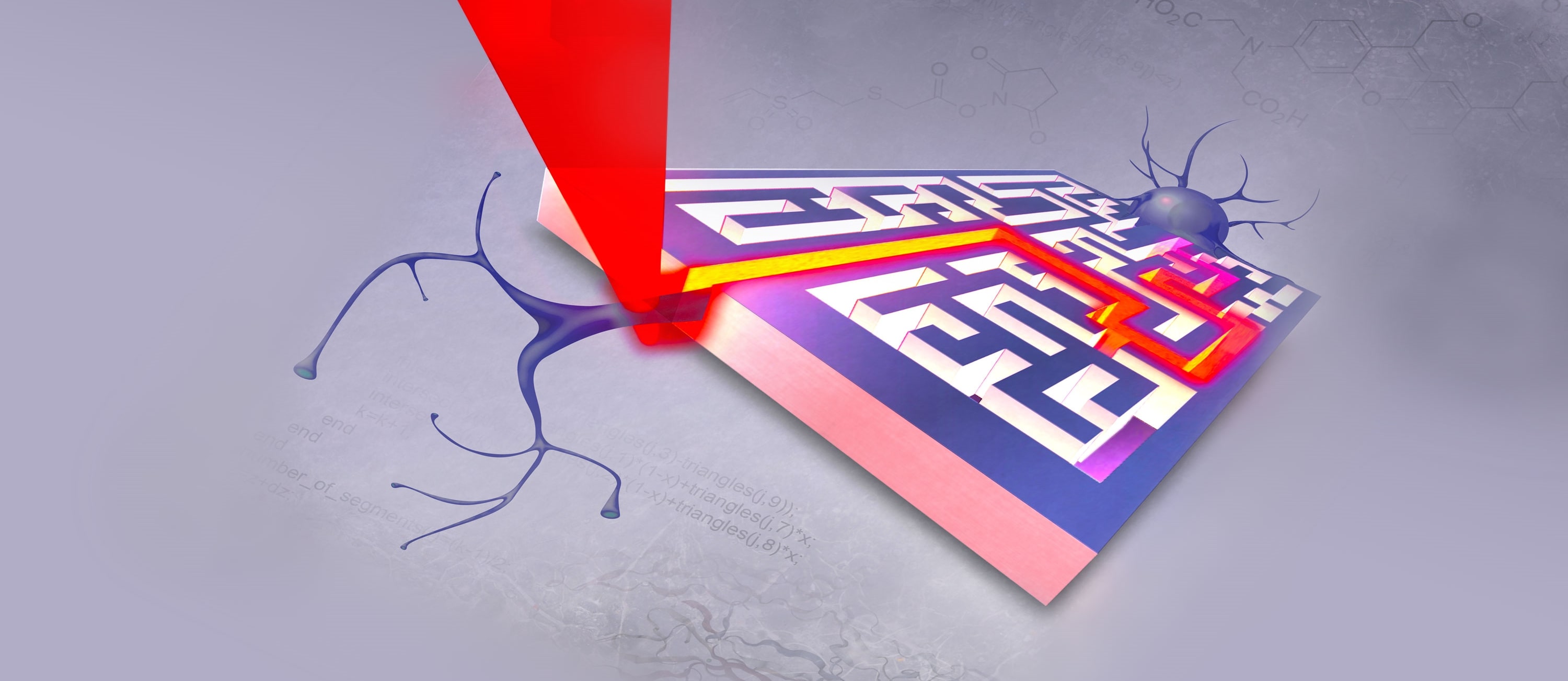Signposts for Neurons
Researchers at the ETH in Zürich have used laser light to position neural guidance molecules in patterns, enabling them to specify the paths followed by neurons in culture. The technique has potential applications in neurobiology and clinical neurology.

Many aspects of the processes that lead to the orderly development of complex multicellular organisms from a single founder cell remain mysterious. But it has become clear that growth patterns are in part controlled by morphogens. These molecules serve as signposts, which determine the direction of cell growth, and in so doing they also contribute to the diversification of cell function. Thus, morphogenetic signaling molecules play major roles in development and differentiation, such as defining body axes and mediating the complex patterning of functional connections between nerve cells in the central nervous system.
These findings imply that it should be possible to specify patterns of cell growth in three-dimensional space by positioning morphogens in appropriate configurations. A group of researchers in the Department of Health Sciences and Technology at the ETH Zürich, led by Marcy Zenobi-Wong (Professor of Tissue Technology and Biofabrication), has now introduced a novel molecular patterning method. The technique uses laser light to catalyze the local attachment of signal molecules to the polymeric network of a hydrogel which has already been seeded with cells. This provides a predetermined pattern of docking sites that are recognized by the growing cells, and thus determine their orientations within the gel matrix.
Drawing patterns with light
One of the signal proteins used in the study, known as nerve growth factor (NGF), specifically influences the orientation of nerve fibres. The authors used laser light to deposit the molecules in a three-dimensional pattern within the hydrogel. “The laser beam triggers a local chemical reaction which anchors NGF to the hydrogel,” says Dr. Nicolas Broguière, a member of Zenobi-Wong’s group and a co-author of the paper. “We optimized the design of the light-sensitive hydrogel to ensure that the signal molecules are anchored to the matrix only within the irradiated regions.” Using this strategy, he and his colleagues were able to direct the growth of individual nerve fibres with diameters on the order of one-thousandth of a millimeter, and trace the paths they followed. “We were indeed able to direct the trajectories of nerve cells by ‘addressing them’ in their own biochemical language,” Broguière explains.
Providing orientation for nerve cells
Biologists have long sought ways to control the growth and migration of cells. The method described by the scientists at the ETH opens a new chapter in this story. Zenobi-Wong and Broguière see potential applications for the technique in medicine. Following injury, nerve bundles seldom regain their original functions. This is because, in response to such damage, the remaining cells grow in a disorganized fashion, and the original pattern of connections cannot be fully restored. “I don’t want to give the impression that we will soon be able to treat patients with this approach,” says Zenobi-Wong. “But with further refinements, the method could perhaps, at some future time, be employed to guide nerve cell growth in the body, thus giving injured nerves a better chance to heal.”
Original publication
Broguière N, Lüchtefeld I, Trachsel L, Mazunin D, Rizzo R, Bode JW, Lutolf MP, and Zenobi-Wong M.
Morphogenesis guided by 3D patterning of growth factors in biological matrices.
Advanced Materials. (2020). doi: 10.1101/828947













